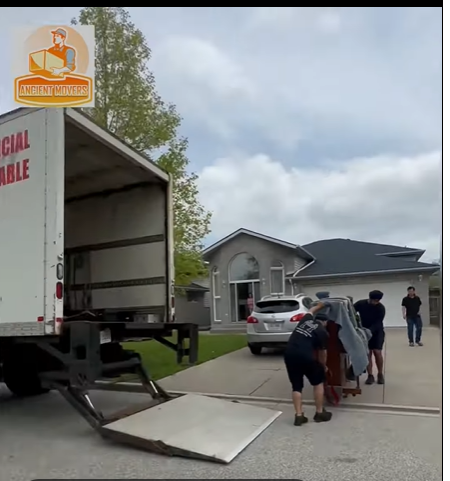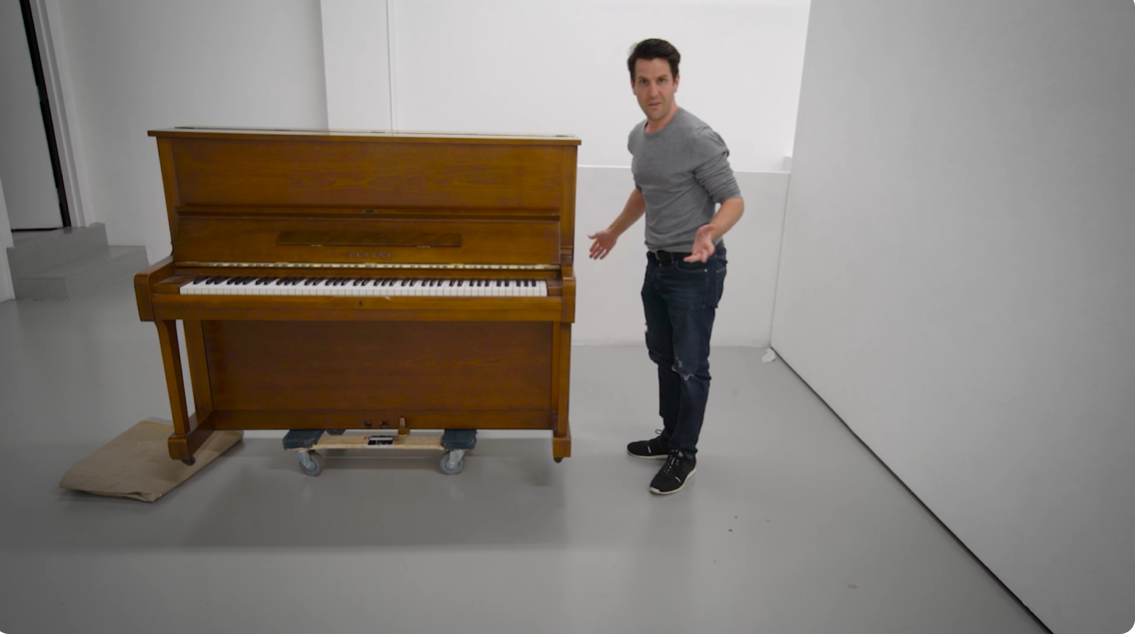How Much Does It Cost to Move a Piano?
We’ve already talked about moving digital pianos on this site—and that article has turned out to be one of the most popular. That’s probably because digital pianos are fairly easy to move if you’re careful. Most people can manage the task themselves without much trouble, especially if the piano isn’t too bulky or heavy.
But moving an acoustic piano is a completely different story. Whether it’s an upright or a grand piano, acoustic models are extremely heavy and awkward to handle. You should never try to move one on your own. Doing so could lead to injury or serious damage to the instrument.
That’s why professional piano movers are always recommended for acoustic pianos. These experts have the right tools and training to move large, heavy pianos through tight spaces, narrow hallways, and staircases—places you might not think a piano could fit through. They also know how to move the piano without scratching the floors or damaging the frame.
However, hiring piano movers doesn’t come cheap. The cost depends on a few key factors, such as how far the piano needs to go, how many steps or obstacles are involved, and what type of piano you’re moving.

For a local move—usually under 30 miles—you can expect to pay anywhere from $200 to $400. That’s the average rate for basic service with no major complications. If your move involves stairs, small doorways, or tight corners, the price will go up, as movers will need to take extra care and possibly use special equipment.
Long-distance piano moves are more expensive and can range from $300 to $1,000 or more. The bigger the distance, the higher the cost—especially if the move crosses state lines or requires careful packing and loading onto a moving truck.
The size and weight of the piano also affect the price. A small upright piano is much easier (and cheaper) to move than a full-size grand piano that’s nine feet long. Larger instruments require more movers, more time, and more effort—which all add to the final bill.
Table of Contents
ToggleWhy Are Pianos So Heavy?
When you look at a piano, it might just seem like a big wooden box. But inside, there’s a lot more going on. One of the main reasons pianos are so heavy is because of a cast iron frame hidden beneath the surface. This frame is shaped like a harp and plays a crucial role in the piano’s structure—it holds the tension of all the strings.

In the early days of piano making, the frame was made of wood. That worked well for smaller instruments, but as piano design evolved and more strings were added to increase range and power, wood simply couldn’t handle the pressure. The tension from the strings became too intense, and a stronger, more durable material was needed—this is when cast iron came into play.
Now, cast iron is incredibly strong—but it’s also very heavy. If you’ve ever lifted a cast iron pan, you know just how much heavier it is compared to something like aluminum or non-stick cookware. Multiply that weight by the size of an entire piano frame, and it’s easy to understand where all that bulk comes from.
But the cast iron frame isn’t the only reason for a piano’s weight. Add in the large wooden soundboard, which helps project the piano’s sound, and the thick wooden casing and panels that give the instrument its beautiful appearance—and the pounds really add up. Most upright pianos weigh between 300 to 500 pounds, while grand pianos can reach up to 1,200 pounds or more.
Do You Need a Piano Mover to Move a Piano?
Yes, you absolutely need a professional piano mover. Even if you’re just moving the piano down the street, this isn’t something you should try to handle on your own. Pianos are not only extremely heavy, but they also have an uneven weight distribution—with most of that weight concentrated toward the back. This makes them unpredictable and dangerous to move without the right experience.
Trying to move a piano yourself is risky and potentially dangerous. Many people assume they can lift a piano with the help of a friend, but it rarely goes as smoothly as expected. Because of the unbalanced weight, it’s easy to lose control. This can result in the piano tipping over—or worse—dropping it on your foot or someone else’s. A single mistake can cause serious injury or expensive damage.

Professional piano movers know exactly how to handle these situations. They’re trained to move pianos safely, using the right techniques and tools to prevent accidents. From special straps to heavy-duty dollies, they come prepared with equipment designed specifically for this job. Hiring someone with experience means you’re far less likely to damage the piano, your home, or yourself.
Trying to do it yourself is just not worth the risk. Many people underestimate the challenges and end up causing more problems than they solve. It’s not just about strength—it’s about technique, planning, and the right tools. Without those, you’re setting yourself up for a disaster that could have easily been avoided.
Another major benefit of hiring a piano mover is the transportation itself. They have specialized vehicles equipped to secure the piano safely during transit. If you try to use your own car—or even rent a van—you probably won’t have the tools needed to hold the piano in place. That’s a big problem, because once a piano starts moving during a drive, it’s nearly impossible to stop safely.
Imagine what could happen if the piano shifts in a rented van. A loose piano can slam into the doors, damage the vehicle, or even break through and cause an accident. That’s not just dangerous—it’s expensive. It’s simply not worth taking that chance.
Can Moving a Piano Cause It to Go Out of Tune?
If you’ve ever wondered whether moving a piano affects its tuning, the short answer is yes, it definitely can. I’ve written a more detailed article on piano tuning that dives into this, but here’s a quick and simple explanation for you.
One of the biggest culprits is humidity change. Imagine taking your piano from a warm, climate-controlled living room and rolling it out into the chilly outdoors. Then, you load it into the back of a cold moving truck, and finally bring it into another warm home. That’s a lot of fluctuation in both temperature and humidity—and pianos are extremely sensitive to both.
I won’t go into the nitty-gritty of how humidity affects piano tuning here (you can read more about that in my full article), but the gist is this: as the piano adjusts to the new humidity level, the wood and strings respond. This can lead to small shifts in tension and structure, which may throw the piano slightly out of tune.
And it’s not just the air. The physical act of moving the piano—rolling it over thresholds, lifting it up stairs, or even just tilting it—can cause internal parts to shift ever so slightly. These tiny movements in the frame or soundboard are completely normal, but they can still affect the tuning, especially if the instrument was already slightly out of balance.
So, what should you do? Wait until the piano is settled in its new location before calling in a tuner. Give it a week or two to adapt to the room’s humidity and temperature. That way, you’ll get a more accurate and stable tuning once everything has had time to adjust.
Can Regular Movers Move a Piano?
In most cases, regular movers aren’t the best choice for moving a piano. While they’re skilled at handling typical furniture, pianos are a completely different challenge. Moving a piano safely requires specialized tools and experience that most general movers simply don’t have.
Many movers might claim they can handle a piano move and may even offer a lower price than a dedicated piano moving service. However, it’s usually worth spending a bit more to hire professionals who specialize in pianos. These experts know the proper techniques and have the right equipment, which significantly reduces the risk of damage to your piano or your property.
Shifting a Piano Within Your Home or a Single Room?
If you’re thinking, “I just want to move my piano to the next room — why should I pay hundreds of dollars for that?” — I totally get it. Sometimes, paying for a full-service move for a short distance feels unnecessary. My general advice is always to hire a pro, but there are exceptions when moving a piano just a few feet.

If your piano has wheels, carefully rolling it to the next room is usually safe. I wouldn’t suggest trying to lift it yourself, as that increases the risk of injury or damage. If your piano doesn’t have wheels (which is true for most), then it’s best to call in the pros.
When Stairs or Steps Are Involved?
It’s very important to remember that if your piano needs to be moved up or down stairs, professional help is a must. Navigating steps safely requires skill and the right gear to protect both the piano and yourself. Ask piano movers for a quote — moving a piano within the same house with stairs usually costs less than a full relocation, but it’s worth every penny to avoid injury or costly damage.
No related posts.

